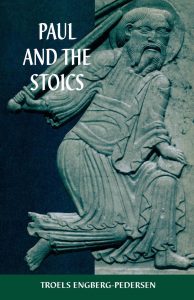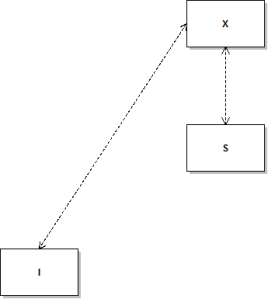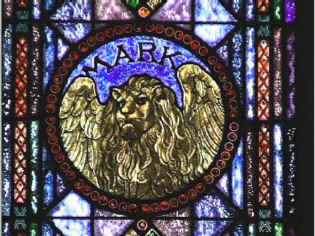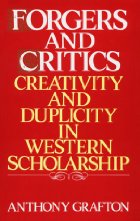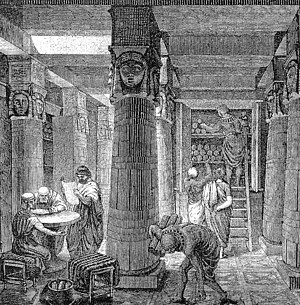I love to read fresh insights that potentially open new understandings on how a biblical author worked to produce what became a part of the foundational canon of western civilization.
I’ve recently been catching up with New Testament Interpretation Through Rhetorical Criticism by classics professor George A. Kennedy (1984).
Acts 1:1-15:35 seems to be a compositional unit and could be read as a complete work. The disciples have carried on the mission of Jesus and seem to have settled their internal differences; faced with Jewish opposition they have persevered, and the gospel is being extended to the gentiles. From 15:36 to the end of the book, focus is turned entirely upon the missionary activities of Paul; Peter and the other apostles are forgotten. (p.127)
I have frequently read the view that the Jerusalem Council is a climactic turning point in the book of Acts, but I think this is the first time I have taken note of the view that this episode also constitutes a satisfactory conclusion to a story that began in Acts 1.
Another take on the “we passages”
Kennedy adds some other interesting observations in support. The first of the “we passages” appears soon afterwards, in 16:10. Kennedy notes that scholars generally assume this marks the moment Luke joined Paul, but he himself points out that if this is the case, then it is odd that the author does not say that. Rather, Kennedy finds it interesting that the first “we passage” comes just after the introduction of Timothy as a companion of Paul.
Again in chapter 20 Timothy joins Paul and the narrative slips into the first person plural. . . . It is possible that Luke utilized Timothy’s account of his travels with Paul and did not alter “we” to “they.” This is unlikely to be an editorial oversight, considering the number of times it occurs and the otherwise smooth flow of the narrative. . . . Firsthand knowledge of what Paul said begins in chapter 20, when Timothy is present, and the speech there is rather different from what has gone before. (pp. 127-8)
I think there is a better accounting for the “we passages”, but I have not spent any time thinking through Kennedy’s suggestion here. It might be worth doing so, at least in respect to a source ostensibly claiming to be by a Timothy. (I don’t think I ever got around to completing my old notes on an alternative explanation for the we passages that I began here two years ago, darn it.)
Classical historiography — and classical endings
Kennedy suggests that the narrative from Acts 1 to Acts 15:35 “may represent a compositional unit which was all that was originally intended to be added to Luke’s Gospel.”
While I can readily accept that section of Acts is “a compositional unit”, I think it would be hard to sustain an argument that it was all that was originally intended to be added to Luke’s Gospel. The introduction speaks of the gospel going to all nations and the narrative presages Paul taking the message before kings and rulers. Both these are not fulfilled until the gospel reaches the capital and ruler of all nations (Rome) and till Paul has addressed Jewish and gentile rulers in Caesarea and Rome. But that the narrative up to 15:35 does represent an independent literary unit with a certain completeness in its own right is nonetheless interesting.
On the eminent suitability of Acts 15:30-35 as a classical ending to a work of ancient historiography, Kennedy writes:
Classical historiography generally does not employ a rhetorical epilogue and instead often concludes with a very brief reference to continuing events (as at the end of Acts 28). This well describes where we are left in Acts 15:30-35. (p. 128 – my emphasis throughout)
Here is Acts 15:30-35
So when they were dismissed, they came to Antioch: and when they had gathered the multitude together, they delivered the epistle: which when they had read, they rejoiced for the consolation. And Judas and Silas, being prophets also themselves, exhorted the brethren with many words, and confirmed them. And after they had tarried there a space, they were let go in peace from the brethren unto the apostles. Notwithstanding it pleased Silas to abide there still. Paul also and Barnabas continued in Antioch, teaching and preaching the word of the Lord, with many others also.
I had not before noticed how this is so well echoed by the ending of Acts 28:
And Paul dwelt two whole years in his own hired house, and received all that came in unto him, preaching the kingdom of God, and teaching those things which concern the Lord Jesus Christ, with all confidence, no man forbidding him.
But what is particularly interesting is Kennedy’s observation as a scholar and professor of the classics:
The opening of 15:36 is reminiscent of the opening of Xenophon’s Hellenica, a work read in Greek schools. Xenophon attached his work on Greek history to the abrupt end of Thucydides (probably as left at the latter’s death) by the words meta de tauta, “And after this . . . .” Acts 15:36 begins “And after some days . . . .” An educated audience such as Luke had in mind might have perceived this.
I like reading of such fresh possibilities when someone more steeped in the broader literary context of the biblical books than in the confines of theological studies publishes his or her insights. If, as Kennedy notes, Xenophon’s Hellenica was studies in Greek schools, his case is quite plausible.
Putting it all together
If in fact the second half of Acts is Luke’s version of Paul’s travels, conceived as a separate entity and based on Timothy’s account filled out by Luke for those periods Timothy did not witness, the retention of the “we” is not an editorial oversight, but a stylistic rhetorical device to increase the authority of the account. No deceit need have been intended; Luke may have thought that the introduction of Timothy in chapter 16 made clear what he was doing, and it is possible that 15:36 was intended to be given a title such as “Luke’s Account of the Missions of Paul, after Timothy.” (p. 128)
If this is a credible option, Kennedy opines that the author originally had in mind a three part corpus:
- The Gospel
- The Activities of the Disciples from the ascension to the meeting in Jerusalem
- Second Acts: The Missions of Paul
Kennedy comments that although there is no real difference in the prose of the two halves of Acts, there is a significant difference in tone. The second half conveys an immediacy of a first-hand observation. I would qualify Kennedy’s observation by saying that this first-hand impression is itself a rhetorical device and not necessarily a fact of the sources at all.
I think that the difference in tone owes more to an additional explanation Kennedy offers — the movement beyond Palestine, Syria and Pisidia and to the Ionian coast, Greece, and beyond.
In this new setting Paul’s speech at Athens, the first address in what might be called Second Acts, takes on special meaning. Not only the Jews reject the gospel; so do the philosophers of the intellectual capital of the world. There is a dramatic movement from rejection in Athens, to rejection in Jerusalem and Paul’s trial, to rejection in Rome, but this rejection by leaders everywhere is shown against a pattern of acceptance by the people. (p.128-9)
I am not sure that Kennedy’s suggestion that the author originally intended a distinctly two part work for Acts is the only explanation for a Xenophon/Hellenica-like join at 15:36. The half-way cathartic ending in Acts with the Jerusalem Council and its aftermath, and the possible half-way kick-re-start at 15:36 could well have been the author’s way of informing his audience that one part of the story had finished and a new part, with a different theme, was to begin. Such rhetorical devices were the tools an author necessarily drew upon to speak his mind to an audience when he had adopted the voice of the anonymous narrator. As Jan-Wim Wesselius comments in The Origin of the History of Israel: Herodotus’s Histories as Blueprint for the First Books of the Bible,
The almost complete absence of the personal aspect of the narrator makes it impossible to express personal thoughts and feelings . . . . This apparently made it necessary to invent or apply various literary techniques that enable an anonymous narrator . . . . to introduce the programme of a book through purely literary means . . . . (p. 77)
Not much is changed if we do see the author having originally intended for Acts to be a two-part work, or if a rhetorical device at Acts 15:36 served to introduce a new thematic program. What it does offer, however, is an insight to the human processes and plans that were responsible for its creation. Anything that helps us see with sharper clarity the West’s primary canon as a human product is A Good Thing.


